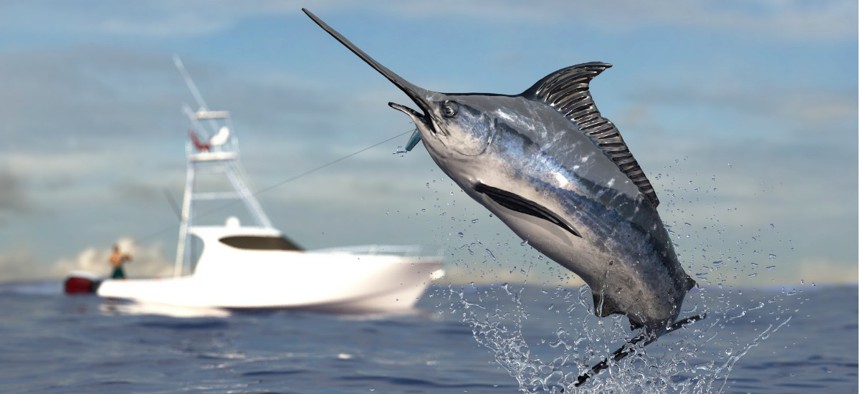Navy to Prototype Fish-Inspired, Autonomous Robots with ‘Self-Healing’ Parts

bbevren/istockphoto.com
Officials identified the vendor they’re eyeing to prototype the futuristic vehicle component.
U.S. Navy officials are developing next-generation autonomous underwater robots that generate virtually no radiated noise while navigating the ocean.
To make the actuators—or components that move and help control the overall systems—they are drawing inspiration from the biology of creatures that inhabit waters where those futuristic vehicles will operate.
According to the statement of work for a combined synopsis and solicitation released Friday, members of the Naval Undersea Warfare Center Division in Newport, Rhode Island, intend to use “Hydraulically Amplified Self-Healing Electrostatic (HASEL) solid-state, soft actuators that mimic the form and function of biomechanical structures in large, high-performance pelagic fishes.”
Such fish, like tuna and swordfish, typically occupy the part of the open sea that is not close to the coast or the sea floor. In building the robots, the Navy appears to be partly interested in copying this type of aquatic animals’ ability to mend serious wounds completely on their own—even growing back some of their fins.
This work falls under the Navy division's bio-inspired propulsor program, which exists to enable the creation of soft but stable fish-like machines that don’t include rotating metallic components, produce no radiated noise, and can operate in full-ocean-depth pressures. Those involved aren’t the only government insiders engineering potentially revolutionary systems with components that are influenced by the complexities of nature. National lab insiders, for instance, recently pioneered a neuromorphic computer chip based off of bee brains.
Via this ongoing effort, the Navy wants to buy custom actuators and develop “novel geometries of such actuators for undersea robotic prototyping,” the document noted. The branch aims to tap a contractor that can construct usable prototypes that can support experiments in testbeds “under high-pressure scenarios outside of pressure vessels, where conventional electric motors would fail.”
In the statement of work, military officials add that the innovative actuators “must be agnostic to pressure, be capable of mimicking the performance of biological muscle, and individual units must be easily replaceable in the event of failure.”
The Navy’s publication pointed explicitly to Colorado-based technology company Artimus Robotics as “the only vendor” that’s capable of meeting the its needs for this pursuit. Still, potential partners that could perform this work are invited to respond with details regarding their capabilities by Oct. 28.






